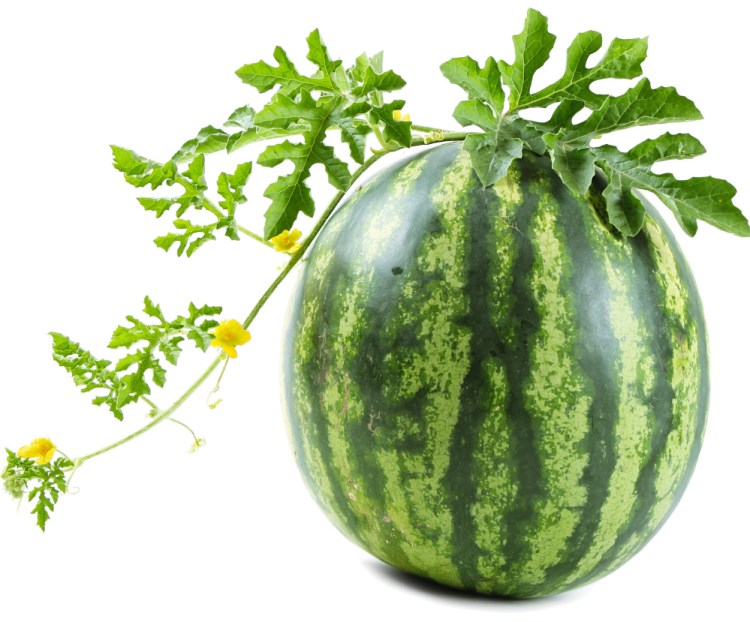Cantaloupes and watermelons are common garden crops in warmer parts of the country, but we in Maine have to give the flavorful cucurbits a lot of help and tender care to get reliable production.
While most warm-weather crops can be planted outside this weekend, it is still too early to leave these sensitive crops outside on their own.
“I usually plant my seedlings inside around the first of June,” said Adam Tomash, who now lives in West Gardiner but is so dedicated to his melons that when he lived farther north in Bingham he figured out a way to grow melons there. Melon seedlings should be kept in a greenhouse or, if you don’t have one, on a heat mat inside. “I can only keep them in a pot for three weeks, and I don’t like to put them out before the third week in June,” Tomash said.
Because of Maine’s short growing season, you have to select varieties that mature quickly – 85 days or fewer, according to Mark Hutton, a vegetable specialist with the University of Maine Cooperative Extension.
“We in this area are actually very lucky because Dr. Brent Loy at the University of New Hampshire is one of the foremost Eastern melon breeders in this country,” Hutton said. Loy melons include “Sarah’s Choice,” “Halona,” “Passport” and “Diplomat.”
Tomash also likes “Maverick” from Johnny’s Selected Seeds and “Hannah’s Choice” from Fedco, as well as the Loy melons. For watermelon, he prefers “Blacktail Mountain.”
Because it is important to leave the roots undisturbed, Tomash plants his seedlings in half-gallon milk cartons, with both the bottoms and tops cut off – although large peat pots work as well. He puts the cut-off milk cartons in a planting tray, fills them with potting soil and plants his seeds. By the time he is ready to put the seedlings into the garden, the plant roots hold the soil together. He does pull the carton up a bit when he transplants the seedlings into his garden. It acts as a barrier for small predators, and he has written the seed name on the carton so it serves as a label, too.
Although Tomash transplants his seedlings later than Hutton does, the two agree on the methods.
It will take 17 to 28 days to grow your seedlings, and you want to transplant them at the two-leaf stage, Hutton said.
You need dark plastic mulch, and Tomash stresses that it be infra-red transmitting or IRT type, which Johnny’s catalog says was also developed by Loy.
Hutton stressed that you have to smooth the soil where you plant the melons so you can put the plastic mulch flush with the soil, which warms enough soil to enable your melons to grow well.
Melons need a lot of room to ramble. Put your transplants at least 3 feet apart so they won’t compete with each other.
Hutton stressed that you don’t want to fertilize melons heavily early in their growth stage or they’ll produce just leaves and stems rather than fruit.
Put half the standard amount of nitrogen in the soil when you prepare the bed – before the plastic mulch goes down.
To promote root growth, water the transplants initially with a planting solution that is high in phosphorus.
Tomash adds a mix of compost in the hole with his transplants.
Once your melons are planted, put floating row cover – also called spunbond polyester with the brand name Reemay – over the melons. It will both retain heat and protect the melons from insects.
In early July, when the melon plants are reaching the edge of the row cover, they also should be producing blossoms.
At this point, remove the row cover so the plants have room to grow and so pollinators can reach the blossoms. This is the time to add the second half of the nitrogen fertilizer.
Hutton said melons need about an inch of water a week – which is about the average amount of rainfall Maine gets during the summer.
But if a couple of weeks pass without rain, you’ll need to water.
Then watch your melons grow. Tomash recommends lifting the melons off the ground – with bricks or half cardboard milk containers (I’ve also seen plastic lifters for melons in catalogs) – to keep critters like mice from eating the fruit and to give them more sun.
Several hints tell you when the melons are ripe. A ripe melon will be heavier than an unripe melon of the same size.
With cantaloupes, the netting on the skin becomes more pronounced, and you get more of a melon aroma.
If the fruit is difficult to remove from the stem, it is not yet ripe. If it separates too easily, it is over-ripe. But if it separates with just a bit of a twist, it is perfectly ripe.
Watermelons are ripe when they turn yellowish where they touch the ground, the skin gets less shiny and it produces a dull, hollow sound when you gently rap the skin.
Just to fill you in, Tomash’s method of growing melons in Bingham, where the first frost often came in August, involved a 6-by-8-foot cloche or mini-greenhouse, which he lifted a couple of feet above the melons when frost was unlikely.
I decided to write this column to help me figure out if I wanted to grow melons in Maine.
I now know that I won’t do it this year – but next winter I’ll think about if I want to buy all that plastic and devote all that garden space to a crop I can buy easily at farm stands.
Still, maybe you want to try? If you do, let me know how it goes.
Tom Atwell has been writing the Maine Gardener column since 2004. He can be contacted at 767-2297 or at tomatwell@me.com.
Send questions/comments to the editors.



Comments are no longer available on this story